
Transplanting carrots is a topic of much debate among gardeners. Known for their finicky nature when it comes to root disturbance, carrots are typically sown directly into their final growing location. However, with the proper techniques and care, transplanting carrots successfully is possible. Here’s a dive into the nuances of transplanting carrot seedlings, including insights and tips to help gardeners navigate this challenging task.
Why Transplanting Carrots Is Challenging
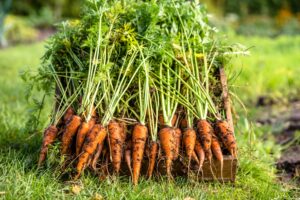
Transplanting carrots is often considered difficult due to their sensitive taproot system, which is easily disturbed during the moving process. Many gardeners struggle with the challenge of keeping this central root intact, as any damage can lead to stunted growth or misshapen carrots. Additionally, the precise conditions required for successful transplanting, such as the need for loose, deep soil and careful handling, add to the complexity of the task. The narrow window for transplanting, when seedlings are young and their taproots undeveloped, also requires timely attention and can be easily missed. These factors combine to make carrot transplanting a task that demands patience, skill, and a gentle touch, deterring some from attempting it.
Is Transplanting Carrot Seedlings Possible?
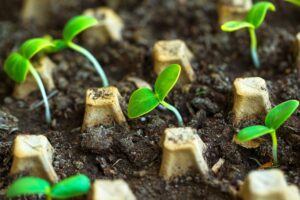
Transplanting carrot seedlings is indeed possible, though it requires meticulous handling and precise conditions. Carrots, being root vegetables, are sensitive to any disturbance that affects their root growth. Traditional wisdom suggests that carrots do not transplant well because they can end up with forked or misshapen roots. However, with proper technique, young carrot seedlings can be successfully transplanted, allowing gardeners to optimize their garden space and extend growing seasons.
Choosing the Right Time to Transplant
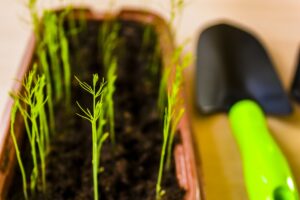
Timing is crucial when transplanting carrot seedlings. The best time is when they are very young, ideally with just one or two true leaves. At this stage, the carrot’s taproot has not yet fully developed, reducing the risk of significant damage. Transplanting during cooler parts of the day, like early morning or late afternoon, can help minimize transplant shock and give the seedlings a better chance to adapt to their new environment.
Preparing the Soil
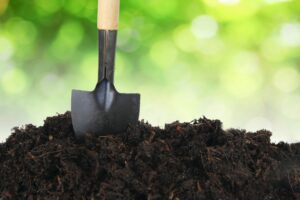
Carrots thrive in loose, well-draining soil that is free of stones and debris, which can cause the roots to fork. Before transplanting, prepare the garden bed by loosening the soil to a depth of at least 8-12 inches and incorporating organic matter to improve fertility and texture. Ensure the soil is moist but not drenched or soaking, as carrots need consistent moisture but cannot tolerate soggy conditions.
Creating a Thin, Straight Hole for Transplanting
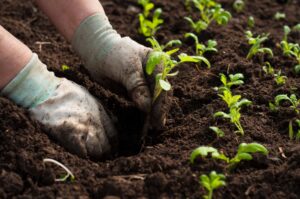
When transplanting carrot seedlings, the creation of a thin, straight hole for each seedling is a critical step. Carrots need a clear, unobstructed path to grow deep into the soil, developing their characteristic long, straight roots. Using a dibber or a pencil, make holes in the prepared bed that are deep enough to accommodate the entire length of the seedling’s root without bending or curling. This precision ensures that the delicate taproot of the carrot seedling can extend directly downward, promoting healthy growth and preventing deformities.
Ensuring Proper Spacing
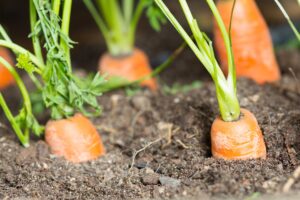
Spacing is vital for the development of carrot roots. When transplanting, place seedlings at least 2-3 inches apart to give each carrot enough room to grow. This spacing helps prevent competition for nutrients and water and allows each carrot to develop a robust and straight root. Consider using a ruler or a spacing guide to achieve uniform spacing.
Watering After Transplanting
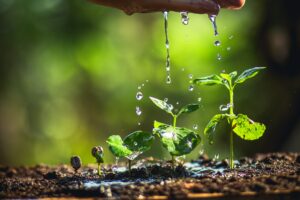
Immediately after transplanting, water the seedlings gently but thoroughly to settle the soil around the roots and eliminate air pockets. Maintain consistent soil moisture levels during the growing season, as fluctuations in water availability can lead to split or misshapen carrots. Mulching around the seedlings can help retain soil moisture and regulate soil temperature.
Monitoring for Pests and Diseases
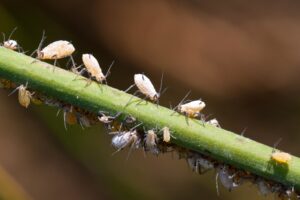
Keep a close eye on the transplanted seedlings for signs of pests or diseases, which can be more prevalent in stressed or weakened plants. Common carrot pests include carrot rust flies and aphids, while diseases like damping-off can affect young seedlings. Prompt action – such as removing affected plants or applying appropriate organic pest control measures – can help prevent the spread of disease and ensure the health of your carrot crop.
Protecting Carrots from Wild Animals

After transplanting, protecting carrot seedlings from wild animals is crucial for their survival and growth. Installing physical barriers such as fencing or netting around the garden bed can effectively deter larger animals like rabbits and deer. For smaller pests, such as rodents, using cloches or mesh covers directly over the seedlings can provide necessary protection without hindering their access to sunlight and rain.
You Can Transplant Carrots!

While transplanting carrots poses its challenges, it is indeed possible and can be successful with careful planning and gentle handling. This outlined process not only maximizes garden space and extends the growing season but also offers the rewarding experience of nurturing these nutritious root vegetables from seedling to harvest.
Catherine is a tech-savvy writer who has focused on the personal finance space for more than eight years. She has a Bachelor’s in Information Technology and enjoys showcasing how tech can simplify everyday personal finance tasks like budgeting, spending tracking, and planning for the future. Additionally, she’s explored the ins and outs of the world of side hustles and loves to share what she’s learned along the way. When she’s not working, you can find her relaxing at home in the Pacific Northwest with her two cats or enjoying a cup of coffee at her neighborhood cafe.
Leave a Reply